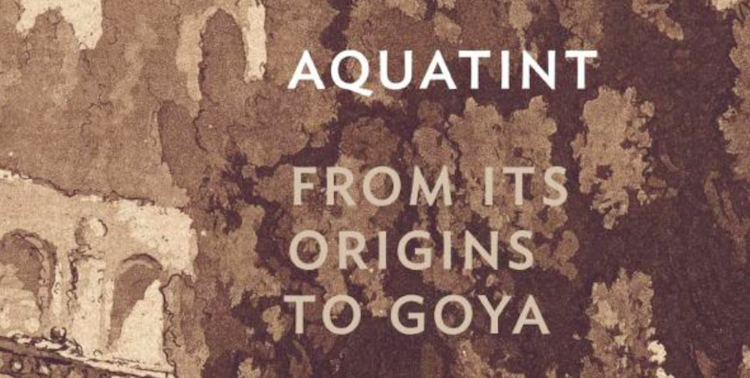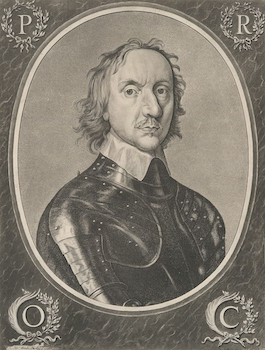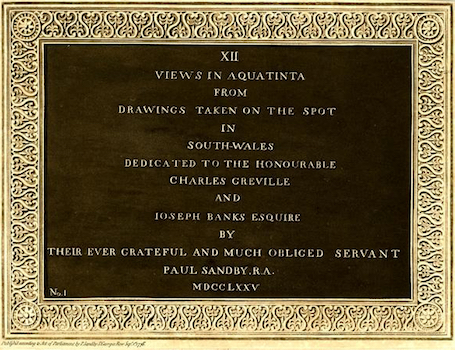
Aquatint, by Rena M. Hoisington—the catalogue of a 2021 exhibition at the National Gallery of Art in Washington, D.C.—is the first general history of aquatint printmaking for more than a century. The only previous work on the subject, S.T. Prideaux’s Aquatint Engraving, was published in 1909.
The full title of Hoisington’s book is Aquatint: From Its Origins to Goya, though the origins of aquatint are a matter of debate. As Prideaux put it: “There seems to be no one person to whom the actual invention of aquatint can definitely be assigned.” Writing 112 years later, Hoisington agrees that “the designation of an artist as the “first” to invent or use acquatint is often complicated”.
The earliest potential aquatint pioneer is Jan van de Velde, whose circa 1653 portrait of Oliver Cromwell has an aquatint background. In The Art of the Print, Fritz Eichenberg argues that the technique “may have been used” by van de Velde, though Prideaux dismisses this, believing that “it is more likely that the attribution is mistaken and that the background was added later.”
The full title of Hoisington’s book is Aquatint: From Its Origins to Goya, though the origins of aquatint are a matter of debate. As Prideaux put it: “There seems to be no one person to whom the actual invention of aquatint can definitely be assigned.” Writing 112 years later, Hoisington agrees that “the designation of an artist as the “first” to invent or use acquatint is often complicated”.
The earliest potential aquatint pioneer is Jan van de Velde, whose circa 1653 portrait of Oliver Cromwell has an aquatint background. In The Art of the Print, Fritz Eichenberg argues that the technique “may have been used” by van de Velde, though Prideaux dismisses this, believing that “it is more likely that the attribution is mistaken and that the background was added later.”


Arthur M. Hind’s A History of Engraving and Etching notes that Jean-Baptiste Le Prince, working more than 100 years after van de Velde, is “generally regarded as the inventor of aquatint.” Prideaux concurs with this view, though Hoisington credits Le Prince as aquatint’s populariser rather than its creator: “Le Prince himself fully acknowledged that he did not invent aquatint, but he proudly took credit for perfecting it.”
Hoisington seems to support the case for van de Velde, writing that aquatint “was invented in the Netherlands in the 1650s,” though she relegates van de Velde’s name to a cursory footnote. As it omits any details of the van de Velde attribution and instead skips forward a century to Le Prince, Hoisington’s book cannot be described as a comprehensive study of aquatint’s origins.
Regardless of who invented the technique, it flourished throughout Europe in the second half of the eighteenth century, and Hoisington covers this acquatint ‘golden age’ in unprecedented detail, though most illustrations are from the National Gallery of Art’s permanent collection. Aside from Le Prince, there are chapters on several other artists, including Paul Sandby, who coined the term ‘aquatint’ in the title of his series XII Views in Aquatinta from Drawings Taken on the Spot in South-Wales. The book culminates with a chapter on Francisco Goya, the artist who “harnessed aquatint’s tonal darkness to his artistic vision like no other.”
Hoisington seems to support the case for van de Velde, writing that aquatint “was invented in the Netherlands in the 1650s,” though she relegates van de Velde’s name to a cursory footnote. As it omits any details of the van de Velde attribution and instead skips forward a century to Le Prince, Hoisington’s book cannot be described as a comprehensive study of aquatint’s origins.
Regardless of who invented the technique, it flourished throughout Europe in the second half of the eighteenth century, and Hoisington covers this acquatint ‘golden age’ in unprecedented detail, though most illustrations are from the National Gallery of Art’s permanent collection. Aside from Le Prince, there are chapters on several other artists, including Paul Sandby, who coined the term ‘aquatint’ in the title of his series XII Views in Aquatinta from Drawings Taken on the Spot in South-Wales. The book culminates with a chapter on Francisco Goya, the artist who “harnessed aquatint’s tonal darkness to his artistic vision like no other.”
